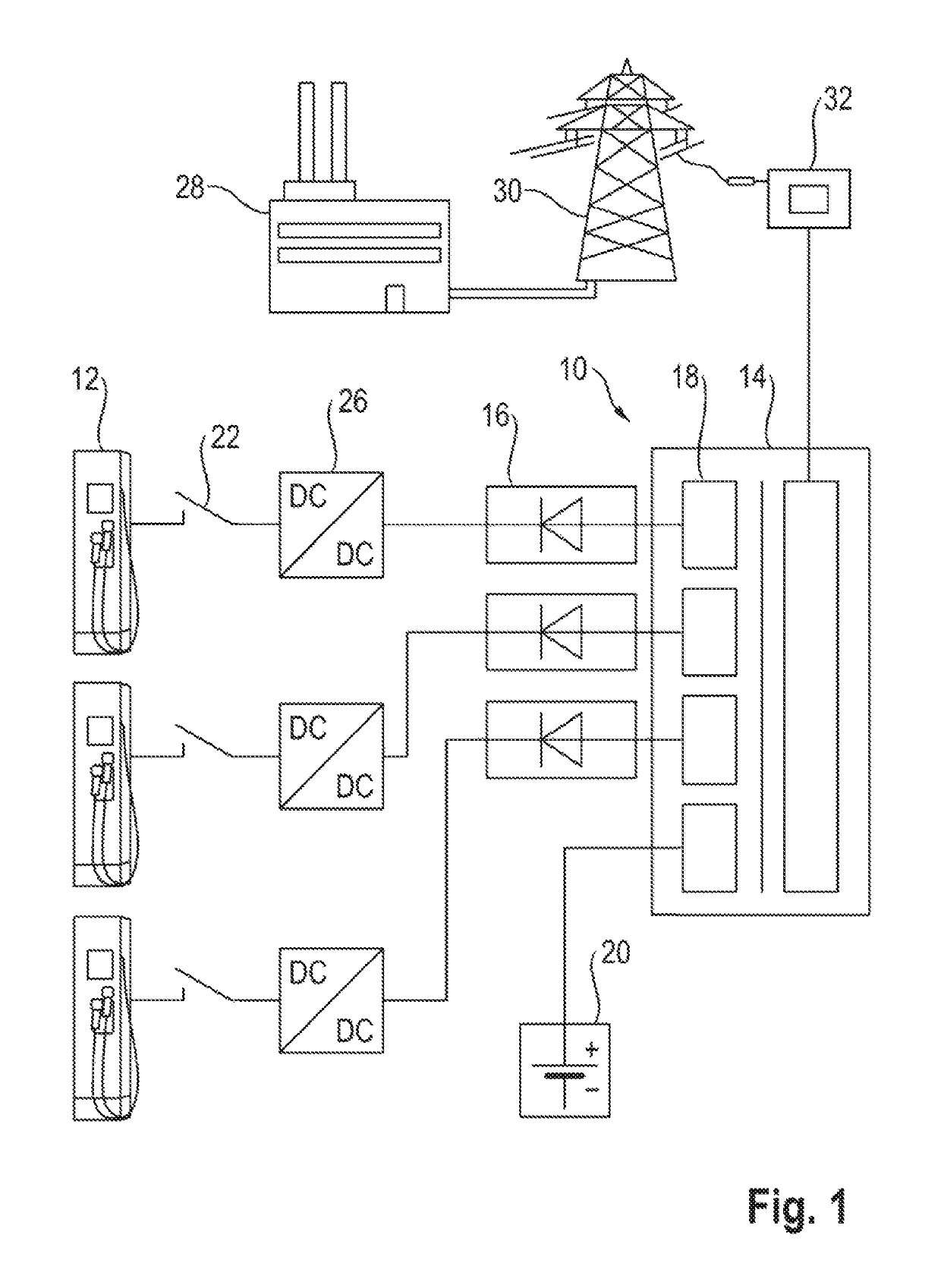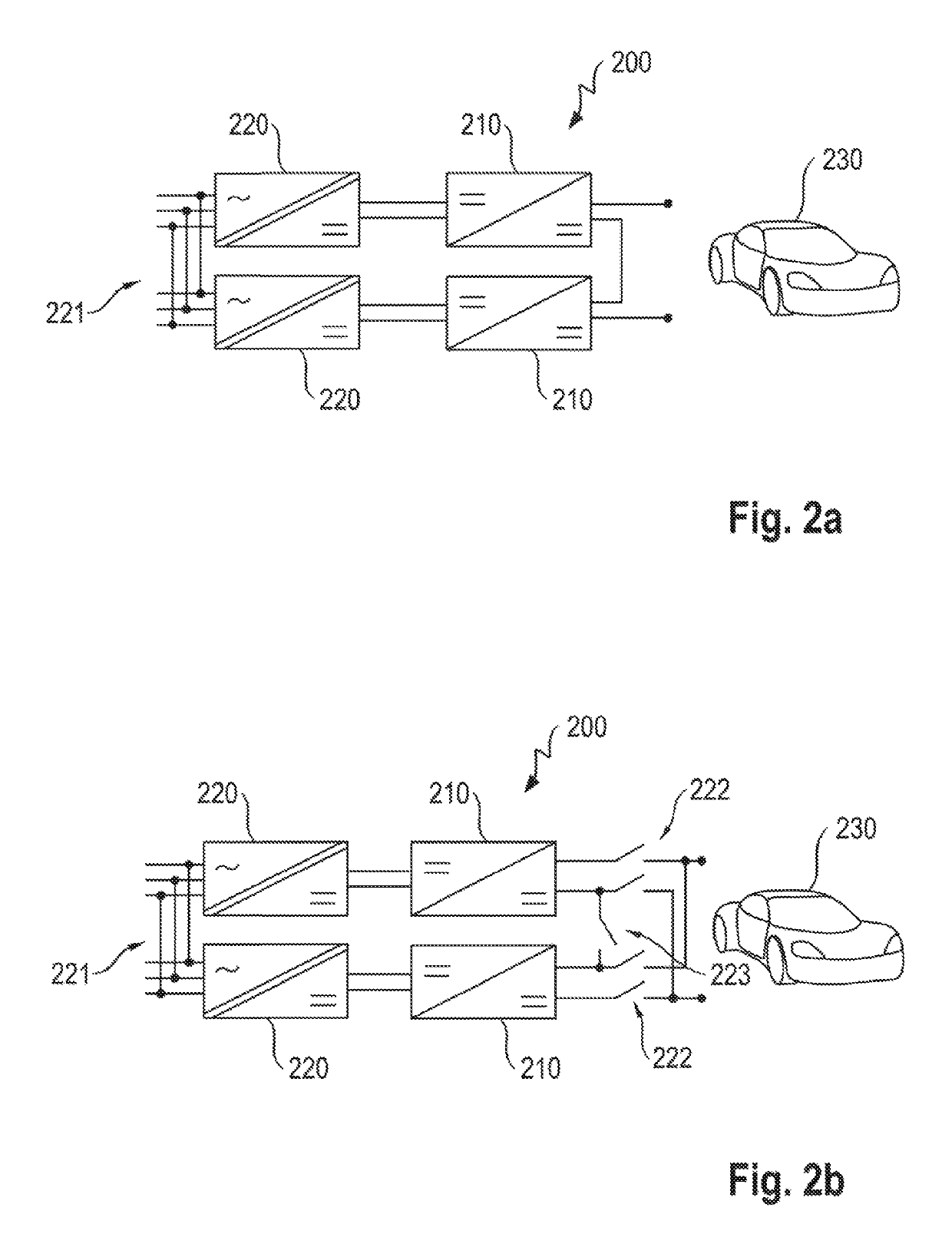Modular power electronics system for charging an electrically operated vehicle
a technology of power electronics and electrically operated vehicles, applied in the direction of electric vehicles, battery/fuel cell control arrangements, electric devices, etc., can solve the problems of not all manufacturers and vehicles will convert or be converted to 800 v charging technology, and the charging speed of modern electric vehicles is extremely restricted in terms of charging speed, so as to improve the fundamental harmonics and improve the switching harmonics. , the effect of significant disturban
- Summary
- Abstract
- Description
- Claims
- Application Information
AI Technical Summary
Benefits of technology
Problems solved by technology
Method used
Image
Examples
Embodiment Construction
[0055]FIG. 1 shows the simplified design of a charging station 10 for charging at least one electrically operated vehicle, that is to say a plug-in vehicle at one of three charging posts 12. The charging station 10 comprises a power transformer 14 having an insulation monitor and safety measures. The power transformer 14 is fed with a medium voltage of 20 kV, for example, by an upstream transformer 32 of a medium-voltage grid. Said upstream transformer is in turn fed from a power plant 28 via an extra-high-voltage and high-voltage grid 30 operated with voltages of between 110 and 380 kV.
[0056]The charging station 10 is embodied as a central high-power AC / DC converter. The charging station 10 comprises three rectifier modules 16, which are connected to three DC-isolated terminal leads 18 of the power transformer 14 and are combined to form a multi-pole busbar, in order to provide an intermediate grid having a total power of 600 kW. A fourth terminal lead 18 is connected to a buffer s...
PUM
 Login to View More
Login to View More Abstract
Description
Claims
Application Information
 Login to View More
Login to View More - R&D
- Intellectual Property
- Life Sciences
- Materials
- Tech Scout
- Unparalleled Data Quality
- Higher Quality Content
- 60% Fewer Hallucinations
Browse by: Latest US Patents, China's latest patents, Technical Efficacy Thesaurus, Application Domain, Technology Topic, Popular Technical Reports.
© 2025 PatSnap. All rights reserved.Legal|Privacy policy|Modern Slavery Act Transparency Statement|Sitemap|About US| Contact US: help@patsnap.com



